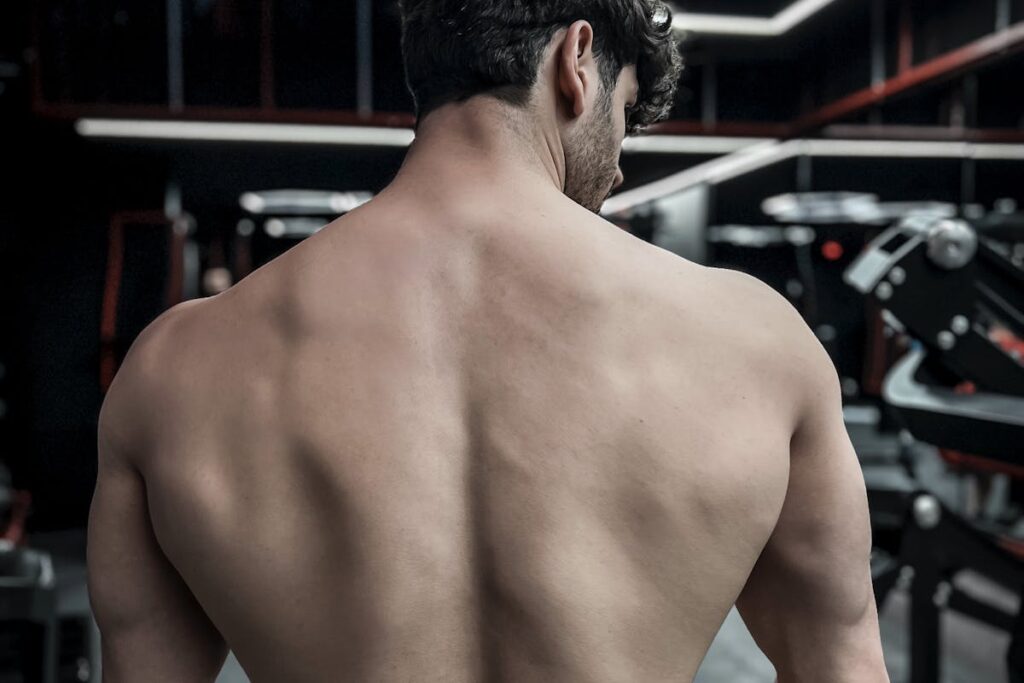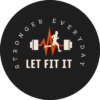When’s the last time you actually thought about training your back with bodyweight back exercises? Be honest.
Most people hit the gym or even just mess around at home and the first things they chase are chest, biceps, maybe some abs if they’re feeling motivated. The back? Eh, that’s “out of sight, out of mind.” Until, of course, your shoulders start aching or you catch yourself in a photo and realize you’re slouching like Quasimodo.
Nobody really talks about it, but your back is kind of the unsung hero of your whole body. You can have big arms, a solid chest, even strong legs, but if your back is weak? Everything feels off. You’ll be able to tell when gravity seems to have tripled while you’re attempting a pull-up, slouching at your desk, or lugging supermarket bags. You stay upright and active with a strong back, and to be honest, it just makes life simpler in general.
And the best part? You don’t need a single dumbbell or cable machine to train it. You don’t even need a gym membership. All you need is you. Your body, gravity, maybe a sturdy table or bar if you’ve got one. That’s it. Bodyweight back exercises are not only possible they’re ridiculously effective when you know how to use them.
So, let’s dig in. I’ll show you exactly why these workouts matter, how they build a back that actually does its job, and the specific moves you should start doing today, not next week.
Why Back Training With Bodyweight Isn’t Optional
Before we jump into the exercises, let’s talk about why. Because a lot of people skip back workouts thinking, “I’ll be fine, I’m not trying to be a bodybuilder.” Big mistake.
Here’s what happens when you skip your back:
- Your posture tanks. You look ten years older than you actually are when you slump, your shoulders roll forward, and your chest tightens.
- You invite injuries. Weak back muscles = more stress on shoulders, spine, and even hips.
- You miss out on strength. Your pulling power, grip, and even your pressing strength rely heavily on having a solid back.
- You look unbalanced. A wide chest and skinny back? It’s like building the front of a house and forgetting the walls.
But here’s the kicker: you don’t need fancy equipment to fix all this. In fact, no equipment back exercises often hit stabilizers and supporting muscles that machines don’t even touch. That’s why gymnasts who train mostly with bodyweight have such ridiculously strong, wide backs. That’s the power of consistent bodyweight back exercises done correctly.
The Muscles You’re Actually Training
It makes a big difference to know what you’re working on, so let’s do a fast anatomical check.
- Lats (latissimus dorsi): those “wings” on your sides that give you that V-shaped torso.
- Rhomboids: little guys between your shoulder blades, crucial for pulling your shoulders back.
- Traps (trapezius): upper, mid, and lower traps stabilize your shoulders and even affect your neck.
- Erector spinae: the long strip of muscles running down your spine that keep you upright.
- Rear delts: the back of your shoulders (if you skip these, your shoulders will look off balance).
- Core stabilizers: not technically “back” muscles, but they’re always engaged when you train back properly.
Every one of these gets worked with bodyweight back exercises. No barbell needed.
Benefits of Bodyweight Back Exercises
Still thinking you need weights? Let me flip that with the benefits of bodyweight back exercises.
- Train anywhere. Your living room, the park, a hotel room, it doesn’t matter. No excuses.
- Budget-friendly. Forget the $40/month gym fee. Your back doesn’t care how much you pay.
- Functional strength. Machines isolate, sure, but bodyweight movements teach your back how to actually move pull, hold, stabilize. That’s real strength.
- Joint-friendly. A lot of back pain actually comes from loading heavy without building stabilizer strength. Bodyweight fixes that.
- Progressive. You can make these harder forever longer holds, slower tempo, crazier variations.
Basically, you’re out of excuses.

The Best Bodyweight Back Exercises
Now, let’s go on to the exciting part. Whether you’ve been lifting for years or are a complete beginner, these are the true techniques that will get your back burning.
1. Pull-Ups: The Classic You Can’t Ignore
If you only do one exercise for your back, make it this. Seriously. Pull-ups are the king of bodyweight back workouts.
They strike your rhomboids, rear delts, lats, traps, biceps, and forearms. A clean pull-up is the best way to increase width and power.
Can’t do one yet? No shame. Do negatives (jump up, lower slow), band-assisted versions, or inverted rows. Work toward it. Once you can crank out clean pull-ups, your back will transform.
2. Superman: Simple But Brutal
Lie flat, arms and legs stretched like you’re flying. Now lift everything off the ground and hold. Sounds dumb, feels amazing.
This lights up your lower back and glutes, both of which most people forget to train until they hurt. Want a stronger spine? Do these.
3. Plank Row: The Anti-Rotation Killer
You know planks? Add a row to them. Suddenly your entire core and back are working overtime.
Hold a plank, pull one arm back like you’re rowing, don’t twist your hips. It’s harder than it looks. Great for rhomboids, traps, and stability.
4. Bear Crawl: Looks Funny, Works Like Magic
Crawling is one of the most underrated functional patterns. Bear crawls torch your back, shoulders, and core all at once.
Hands and feet on the floor, knees just off the ground. Crawl forward, crawl back. Try 30 seconds you’ll be sweating.
5. Rear Delt Raise Plank
Rear delts are the missing piece for most people. Weak rear delts = shoulder issues.
Do this: plank position, lift one arm sideways to shoulder height, return. Alternate. Your shoulders will thank you later.
6. Floor Pull-Ups: The Genius Hack
No pull-up bar? No problem. Lie under a sturdy table or bar, grip it, and pull your chest up. Boom instant horizontal pull.
This is one of the best back workouts at home for beginners building toward full pull-ups.
7. Inverted Rows: Don’t Sleep on These
Same idea as floor pull-ups, but done with a straight body under a bar or edge. They’re like push-ups for your back simple, scalable, and stupidly effective.
8. Scapular Retractions: The Posture Fixer
This tiny move is a game-changer. Hang from a bar, arms straight. Without bending elbows, just pull your shoulder blades down and together. That’s it.
Feels small, but it’s huge for fixing slouchy shoulders.
9. T-Push-Ups: Core + Back Combo
Push-up, rotate into a side plank, lift your top arm toward the sky. Repeat other side. You’re training obliques, rear delts, traps all in one smooth move.
Sample Bodyweight Back Workout (Without Equipment)
Here’s a simple bodyweight back exercises routine you can run 2–3x a week.
- Pull-Ups (or floor pull-ups) – 6–10 reps
- Superman – 20–30 sec hold
- Plank Row – 8–10 reps per side
- Bear Crawl – 20–30 steps forward + back
- Rear Delt Raise Plank – 10 per side
- Inverted Rows – 10–12 reps
- Scapular Retractions – 8–10 reps
- T-Push-Ups – 6–8 per side
Do 3–4 rounds. Rest as needed. Done.
Tips Most People Ignore
- Don’t rush. Back muscles love slow, controlled reps.
- Instead of using your arms to pull, consider using your back.
- Add progressions harder angles, longer holds, one-arm variations.
- Pair with core training. A strong core supports your back.
- Stay consistent. Once in a while won’t cut it.
The Takeaway
To strengthen your back, you don’t really need a gym full of equipment. Your own body is sufficient most of the time. Simple exercises like pull-ups, crawls, and those Superman holds on the floor may seem simple, but they have a greater impact than you might imagine if you perform them frequently. If you persevere and make minor adjustments as you gain strength, your back will begin to feel different outside of workouts.
And to be honest, the reward goes beyond simply being “fit” or broad from behind. The true triumph is being able to walk about without feeling stiff, sit without slouching, and avoid the persistent pain that so many people take for granted. Sure, the appearance is good, but the ability to move freely and live pain-free? It’s worth it for that reason.
Why Most People Neglect Back Training
Let’s be real: back training isn’t sexy. You can’t see your back in the mirror while you’re curling dumbbells, and nobody at the beach compliments your rhomboids. That’s why most beginners (and even a lot of seasoned lifters) skip it or treat it as an afterthought.
Chest days? Packed benches. Biceps curls? Everyone’s doing them. But back training? Crickets.
This fixation with “mirror muscles” has the drawback of making the body imbalanced, with the front being strong and the back being weak. That will eventually lead to discomfort, harm, and annoyance.
Your neglected back muscles are probably wailing for attention if you’ve ever experienced shoulder tightness, persistent neck tension, or low-back pain.
How a Strong Back Changes Everyday Life
You don’t need to be a competitive athlete to care about back training. Consider the number of times you pull, raise, or steady something each day:
- Your lats and traps help to support the load when you’re carrying groceries.
- When working at a desk, rhomboids prevent your shoulders from hunching over.
- Picking up your kid: That’s all posterior chain strength.
- Sports: Your back is the center of power whether you’re playing basketball, swimming, or martial arts.
- Posing confidently alters both your self-perception and how other people perceive you.
You are held back by a weak back in ways you are unaware of until it is too late. Conversely, having a strong back makes things easier.
Common Mistakes With Bodyweight Back Exercises
Even though bodyweight back exercises seem simple, people mess them up all the time. Some common errors include:
- Using arms instead of the back. When doing pull-ups or rows, too many people yank with their biceps. The trick is to think about your elbows driving back and your shoulder blades pulling together.
- Skipping scapular control. If your scapulae (shoulder blades) aren’t stable, you’ll never build a truly strong back. Exercises like scapular retractions are underrated but crucial.
- Rushing reps. Back muscles respond better to controlled tension. If you’re swinging and bouncing, you’re cheating yourself.
- Ignoring rear delts. Everyone trains lats, but few people hit the smaller muscles that keep shoulders healthy.
- Inconsistent training. Once every few weeks won’t cut it. Training for the back should be as regular as that for the legs or chest.
Progress: Without Equipment, from Novice to Expert
The beauty of bodyweight back exercises is that progression never ends. You can continue to increase your strength by modifying your range of motion, tempo, and leverage; dumbbells and plates are not required.
- Beginners: Superman holds, scapular retractions, and floor pull-ups.
- Intermediate: Bear crawls, rear delt lifts, plank rows, and inverted rows.
- Advanced: Archer pull-ups, typewriter pull-ups, one-arm inverted rows, extended bear crawls.
Even if you think you’ve “outgrown” bodyweight, there’s always a harder variation waiting for you.

Bodyweight vs. Weights: Which Is Better for Your Back?
This is the big debate, right? Free weights vs. bodyweight.
Here’s the truth: you don’t have to choose.
- Weights give you progressive overload. You can keep adding plates, which is great for raw strength.
- Bodyweight builds functional control. You master how to move your body in space.
For posture, joint health, and athletic ability, bodyweight is often more practical. For raw muscle size and powerlifting goals, weights might have an edge. The best back training combines both but if you’re stuck at home, bodyweight back exercises alone are more than enough.
How to Program Your Bodyweight Back Workouts
You don’t want to just throw random exercises together. Here’s a simple weekly structure:
- 2–3 sessions per week is perfect for most people.
- Switch between exercises that are “stability focused” (bear crawls, planks) and “pulling focused” (pull-ups, inverted rows).
- Workouts should be consistent yet brief (20–30 minutes).
Sample Split:
- Day 1: Superman, rear delt raise plank, and pull-ups
- Day 2: T-Push-Ups, Bear Crawls, and Inverted Rows
- Day 3: Complete Routine (mixing all 7–8 workouts)
Lifestyle Factors That Support Back Strength
Training is half the battle. A truly strong back needs attention outside the workout too.
- Mobility: To release tension in your shoulders and chest, stretch them.
- Recovery: Muscle growth occurs while you sleep.
- Posture check-ins: Every hour, reset your shoulders down and back.
- Core work: A weak core = a compromised back. Planks, hollow holds, dead bugs all support your spine.
- Nutrition: Muscles need fuel. Don’t starve yourself and expect growth.
FAQ: Bodyweight Back Training
Q: Is it possible for bodyweight exercises to develop muscle like weightlifting?
Indeed, particularly for novices and intermediates. You can gain a lot of muscle by increasing the time under strain and advancing the variations.
Q: How often should I train my back with bodyweight moves?
2–3 times a week is ideal. More than that? Make sure you balance intensity and recovery.
Q: What if I am not able to perform pull-ups?
Begin with scapular retractions, negative pull-ups, and inverted rows. Progression is everything.
Q: Are these exercises safe for people with back pain?
In most cases, yes, however it varies by situation. Start slowly, concentrate on your form, and see a physiotherapist if you have ever been injured.
Q: Do I need equipment?
Nope. A sturdy bar or table helps for rows and pull-ups, but even without one, moves like Superman, bear crawls, and planks will transform your back.
Final Thoughts
Your back is your anchor. It’s the silent hero behind every lift, every sprint, every daily movement. Ignoring it is like trying to build a house with no frame it just doesn’t hold.
The good news? You don’t need fancy programs, expensive memberships, or racks of weights to get it strong. You already have your body, which is the ideal tool for the job.
So whether you’re training in your living room, a hotel room, or a playground, remember, bodyweight back exercises aren’t a backup plan. They’re the plan. No excuses, no shortcuts. Just results. Bodyweight back exercises make it possible to stay consistent without excuses.


Pingback: Short Head Bicep Exercises: Build Thicker, Wider Arms That Pop
Pingback: Unlocking Flexibility: The Best Lower Back Stretches for Daily Relief
Pingback: How to Strengthen Lower Back (The Smart Way Trainers Actually Do It)
Pingback: Lower Chest Exercises: The Ultimate Guide to Defining Your Pecs